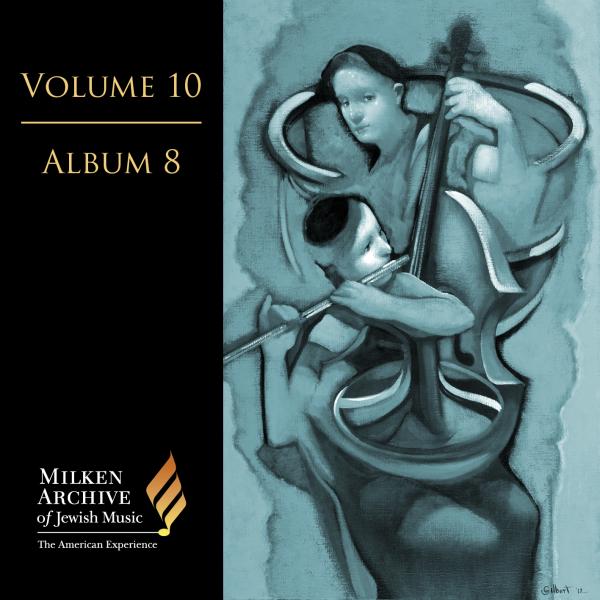Tracks
Track |
Time |
Play |
| Rosh Hashana | 01:50 | |
| Yom Kippur | 02:07 | |
| Tabernacle (Sukkot) | 01:18 | |
| The Maccabeans (Hanukka) | 01:27 | |
| The Feast of Queen Esther (Purim) | 01:37 | |
| Passover | 01:28 | |
| The Feast of Weeks (Shavuot) | 02:16 |
Liner Notes
The seven-branched candelabrum (m’nora), as described in Exodus 27:21, was used in the mishkan—the portable sanctuary—whose construction was supervised by Moses in the wilderness, at Divine behest, during the Israelites’ journey toward the Holy Land following the exodus from Egypt. It was also used much later in the Temple in Jerusalem. It had a base and a shaft with six branches, fashioned of beaten solid gold. According to conventional understanding, the six branches were made to curve to the height of the central shaft; thus all seven lights made a straight line and symbolized the principle of eternal, universal enlightenment. These lights, which required daily fuel of the purest possible olive oil, burned from evening to morning.
Some recent scholarship has questioned the curvature of the branches, citing and reinterpreting earlier sources in support of the view that they were diagonal.
The Roman-era Jewish historian Josephus tells us that three of the lights burned during the day, although, according to tradition, only the center light remained burning throughout the day. This was known as the ner hama’aravi (the western light), since it was adjacent to the branches on the east side (Rashi commentary to Shabbat 22b). It is also mentioned in I Samuel (3:3), where its reference is ner elohim (lamp, or light of God). Its modern incarnation is generally viewd as the ner tamid (the continually burning light), which remains constantly lit at or above the ark in synagogues.
The m’nora is also said to symbolize the seven-day Creation, with the center, or seventh, light representing the Sabbath. Other interpretations include the m’nora’s reference to the earth’s continents, to the poetic “seven heavens” under guidance of Divine light, and to seven holy days and festivals (including the postbiblical ones). It is a common, indeed overused, visual symbol of both Judaism and of the Jewish people, and is found on tombstones dating as far back as the 1st century C.E. The earliest preserved image of a Temple m’nora is found on the Arch of Titus, and it was intended apparently to proclaim and signify the Roman triumph and the accompanying parade following the destruction of the Temple in 70 C.E. There is thus a talmudic opinion that any use of the seven-branched candelabra outside the Temple is prohibited (M’na(h.)ot 28b).
Inspired by the image of the seven-branched candelabra, Milhaud wrote this solo piano piece in the space of a week in 1951. Its premiere was given by the Israeli pianist Frank Pelleg the following spring at the opening of the Ein Gev Festival during Milhaud’s first visit to Israel.
Credits
Composer: Darius MilhaudPerformers: Frank Pelleg, Piano
Additional Credits:Publisher: Southern Music Co.
